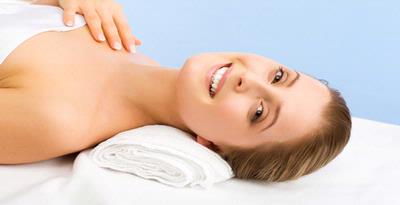Hormones are undoubtedly holds a big role in our lives. In the female sex hormones work together in an intricate pattern, so that the function of the reproductive cycle running smoothly.
The release of sex hormones affect sexual development and fertility
The main female sex hormones estrogen and progesterone is produced mainly in the ovaries during periods of reproduction. In every stage of a woman's life, function and production of sex hormones is also varied.
Childhood Although the new hormone is active at the age of puberty, hormones actually affect the body's been since in the womb. If we look, often times the newborn (male or female) have breasts that look great, sometimes followed by the release of a little milk.
This happens because the body's flow of estrogen from the mother to fetus during pregnancy. However, this condition is only temporary and disappear within a few weeks. Although in some baby girl breast enlargement may still be living up to children aged 2 years before finally completely disappeared.
At the age of puberty is the release of sex hormones affect the sexual development, sexual characteristics, and fertility. Important milestone of puberty in girls is the breast bud grows, the appearance of hair in the pubic area and underarms, as well as menstruation. Puberty process takes about 4 years.
During puberty, the pituitary gland of a girl started to increase secretion of two key hormones, namely folicle stimulating hormone (FSH) and luteinizing hormone (LH). Both types of these hormones play an important role against the occurrence of releasing eggs and menstruation.
Adulthood Besides helping to control ovulation, fertilization, and pregnancy, estrogen maintains bone strength and helps regulate cholesterol. Progesterone works together with estrogen to prepare the body of a woman facing conception, pregnancy, and helps regulate the menstrual cycle.
This hormone also plays an important role in the growth and manage the distribution of body fat in women resulting in more fat deposits in the thighs, buttocks, and hips. Meanwhile, testosterone helps the formation of muscle and bone.
Pregnancy If the egg can be fertilized and pregnancy occurs, there are dramatic changes in hormones in the body of a woman. Usually decreased levels of estrogen and progesterone that are common at the end of the menstrual cycle does not occur. Instead, a new hormone, human chorionic gonadotrohin (HCG), produced for the development of the placenta, stimulates the ovaries produce more estrogen and progesterone are needed during pregnancy.
At the age of 4 months of pregnancy, the placenta takes over duties as the main producer of ovarian estrogen and progesterone. This hormone makes the uterus lining thicker, increasing the volume of blood circulation, and relaxes the muscles in the uterus so that more space is available for infants.
Before the birth, other hormones take over the role to help the uterus to contract during and after childbirth. This hormone also stimulates the production of breast milk.
After childbirth After childbirth, levels of estrogen, progesterone and other hormones plummeted, causing physical changes. The uterus will return to its original size before pregnancy, pelvic muscles increases, and the volume of blood circulation back to normal. This dramatic hormonal changes that often lead to postpartum depression.
Menopause Hormonal changes that occur when other significant women entering menopause. In the 3-5 years before the end of the menstrual cycle, normal ovarian function begins to decline. This makes the menstrual cycle is shorter or longer. Sometimes the ovaries produce less estrogen so that the wall of the uterus does not thicken until the end of menstruation does not occur.
In the entire life of women, estrogen helps protect the heart and bones, as well as keeping the breast, uterus, and vagina in a healthy condition. That is why, the decline in estrogen levels during and after menopause can affect their health, but also trigger symptoms that are uncomfortable.
Loss of estrogen causes a large number of women at higher risk of heart disease and osteoporosis. Another problem is the vagina becomes dry and uncomfortable during intercourse.

No comments:
Post a Comment